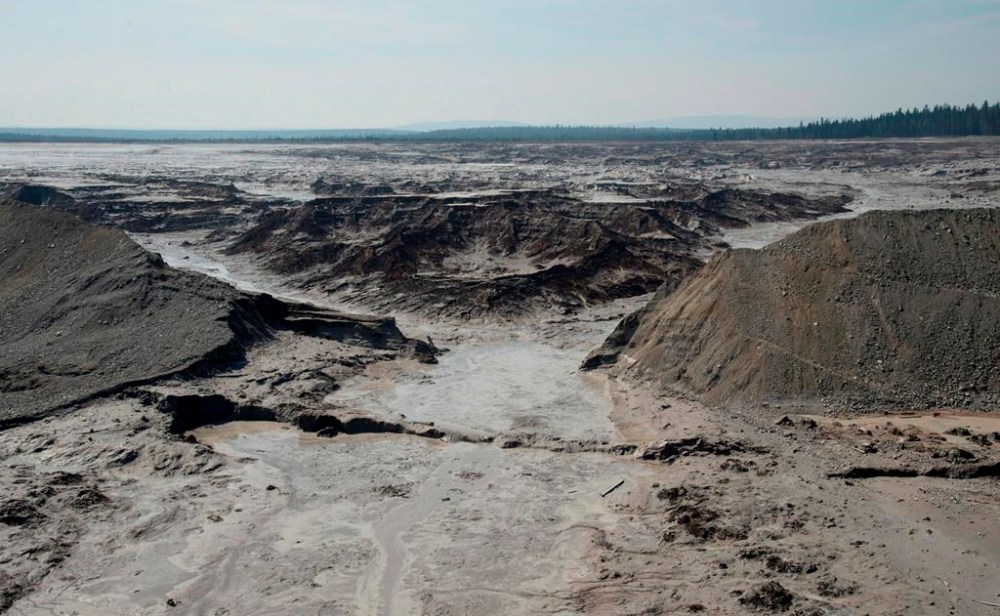Mount Polley boss says 2014 B.C. mine spill not toxic as firm faces fisheries charges
Advertisement
Read this article for free:
or
Already have an account? Log in here »
We need your support!
Local journalism needs your support!
As we navigate through unprecedented times, our journalists are working harder than ever to bring you the latest local updates to keep you safe and informed.
Now, more than ever, we need your support.
Starting at $15.99 plus taxes every four weeks you can access your Brandon Sun online and full access to all content as it appears on our website.
Subscribe Nowor call circulation directly at (204) 727-0527.
Your pledge helps to ensure we provide the news that matters most to your community!
To continue reading, please subscribe:
Add Brandon Sun access to your Free Press subscription for only an additional
$1 for the first 4 weeks*
*Your next subscription payment will increase by $1.00 and you will be charged $20.00 plus GST for four weeks. After four weeks, your payment will increase to $24.00 plus GST every four weeks.
Read unlimited articles for free today:
or
Already have an account? Log in here »
Hey there, time traveller!
This article was published 22/01/2025 (262 days ago), so information in it may no longer be current.
The president of the company involved in the Mount Polley environmental disaster that poured millions of cubic metres of mine tailings into B.C. waterways 10 years ago says the material spilled wasn’t toxic.
Imperial Metals Corp. and two other firms were charged last month with 15 alleged Fisheries Act breaches, accused of allowing a “deleterious substance” from the mine’s tailings pond into several bodies of water.
But Imperial Metals president Brian Kynoch says the mine tailings were “benign,” and the breach released traces of elements like copper and arsenic that are naturally occurring.

Kynoch says no waters were poisoned by the spill, and testing showed that drinking water guidelines were not exceeded and fish numbers bounced back in the years following the spill.
He says the company’s lawyers have advised him not to speak publicly about the charges that Imperial is facing under the Fisheries Act, and Imperial Metals previously said after being charged that it did not intend to make public statements.
The Fisheries Act indictment says the companies’ work “resulted in serious harm to fish that are part of a commercial, recreational or Aboriginal fishery.”
The catastrophic collapse of the tailings dam in the B.C. Interior sent about 25 million cubic metres of tailings from the copper and gold mine surging into waterways including Polley and Quesnel lakes on Aug. 4, 2014.
Some scientists say there have been years of environmental impact at the site.
Greg Pyle, an aquatic eco-toxicologist and professor emeritus at the University of Lethbridge, has published research showing tiny invertebrates that form the basis of the aquatic food chain displayed elevated metal accumulation at sites affected by the spill, and he has called it one of the “most contaminated sites in the country.”
Kynoch said in an interview that the physical damage caused by the tailings pond failure isn’t in question, but he said water and fish testing data collected in the aftermath showed fears of toxicity didn’t come to pass.
“We’ve spent millions of dollars on testing and it’s kind of like it’s ignored,” Kynoch said. “We haven’t had a fish sample that didn’t pass the test for it being edible.”
He said the company recognizes the cultural importance of fish to nearby First Nations, and “worked diligently” to keep them informed as they worked to remediate and reopen the mine.
He said mining companies around the world, and particularly in B.C., are aware of the importance of relationships with local First Nations and local residents and to keep them “more involved in the process.”
“No matter what we do, accidents can still happen,” Kynoch said. “A lot of effort was put into tailings. … Anything we engineer, anything we design, no matter how much you do it, there’s still risk and so we need to do all we can to mitigate the risk.”
Since the dam failure, Kynoch said the company successfully did a trial of “dry stacking” tailings at the mine, which means they’re not subject to flowing away like those stored in liquid.
He said the dry stacking method is an “evolution” of tailings storage.
“They’ll be more solid, I think, and lots of mines in the world are headed that way,” he said.
While he’s constrained from speaking on the charges for alleged fisheries violations, Kynoch said the company didn’t “run away” after the tailings pond failure.
“We stayed. We fixed the creek. We spent our money,” he said. “I’m actually proud of that part of it. The fish are back there in the creeks and spawning.”
“We faced the music and fixed up the creek from my perspective,” he said.
This report by The Canadian Press was first published Jan. 22, 2025.
